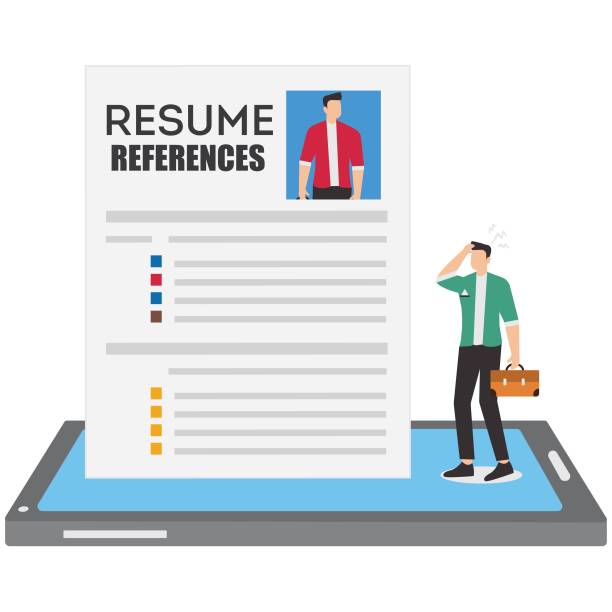The Importance of Entering the Global Market through Multilingual Websites
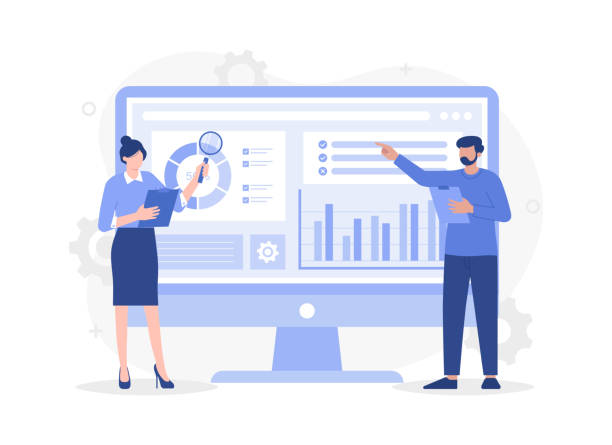
In today’s world, where geographical boundaries have blurred, #ReachingGlobalMarkets has become more important than ever.
One of the most powerful tools to achieve this goal is #MultilingualWebsiteDesign.
This approach is not just about translating content; it’s about creating a communication bridge between your business and a global audience.
By providing content in different languages, you not only increase your reach but also show respect for diverse needs and cultures.
This leads to greater customer trust and, consequently, an increase in conversion rates.
A multilingual website serves as a gateway to countless opportunities for businesses, from the smallest startups to the largest corporations, allowing them to transcend language barriers and send a universal message.
This is especially vital for industries looking to attract international customers.
Multilingual website design is not merely a strategic choice but a necessity for competing in today’s global economy.
Without this capability, a significant portion of your potential market will be overlooked, meaning lost growth and development opportunities.
Your website is essentially the digital representative of your brand worldwide, so it must be designed to include everyone and speak their language.
Therefore, investing in this area is a smart and crucial step for any forward-thinking business.
Are you tired of losing business opportunities due to not having a professional corporate website?
Rasawweb helps you by designing professional corporate websites:
✅ Build a powerful and reliable image for your brand
✅ Convert website visitors into loyal customers
⚡ Get a free consultation now!
Why Does Your Business Need a Multilingual Website?

As mentioned earlier, multilingual website design is not just a luxury option; for many businesses, it’s a strategic necessity.
Let’s first address this question: Did you know that most internet users prefer to read content in their native language? This fact alone is a strong reason for the importance of providing content in multiple languages.
Expanding the audience reach is one of the most prominent benefits of having a multilingual site.
By doing so, you are no longer limited to a specific geographical area or language and can reach customers from all over the world.
This not only increases the volume of potential customers but also enables your business to penetrate new and unexplored markets.
For example, an online store that only provides content in Persian will lose its potential English-speaking, Arabic-speaking, or Chinese-speaking customers.
Furthermore, strengthening brand credibility at an international level is another significant achievement.
When a company can communicate with its audience in their native language, it sends a message of respect and commitment to the customer.
This leads to greater trust and loyalty.
Ultimately, it provides you with a significant competitive advantage.
In a market where many competitors still operate in only one language, your multilingual site will put you a step ahead, allowing you to capture a larger market share.
This is an analysis that every business must undertake for survival and growth in today’s digital world.
Technical Considerations in Multilingual Website Development
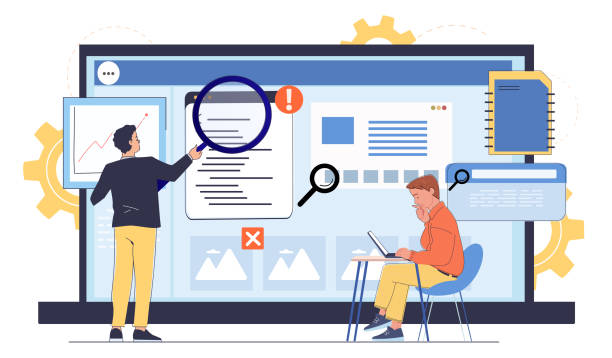
When you decide on multilingual website design, there are numerous technical issues that need to be carefully considered.
Choosing the appropriate URL structure is one of the first and most important steps.
There are three main methods for this: subdomains, subdirectories, and country code top-level domains (ccTLDs).
Each has its pros and cons; for example, subdirectories generally offer better SEO manageability, while ccTLDs are specifically targeted at particular geographical markets.
Selecting the right content management system (CMS) is also crucial.
Systems like WordPress with plugins like WPML, Drupal with native multilingual capabilities, and Joomla are popular choices that provide easy management of multilingual content.
These tools allow for language separation and easy content translation.
Furthermore, correctly implementing Hreflang tags for search engines is essential.
These tags help Google and other engines identify and serve the correct version of a page based on the user’s language and geographical region, which in turn significantly improves international SEO.
Issues related to support for special characters, right-to-left (RTL) text for languages like Persian and Arabic, and optimizing images for different languages are other technical challenges that must be considered.
A specialized web development team in multilingual website design can provide the necessary guidance in facing these complexities.
These are specialized points that must be addressed for an efficient and globally optimized website.
| URL Structure Type | Advantages | Disadvantages | Example |
|---|---|---|---|
| Subdirectory | Stronger SEO (domain authority consolidation), easier management | Requires precise structuring | example.com/en/ |
| Subdomain | Complete content separation, hosting on different servers | Domain authority is divided, more complex management | en.example.com |
| Country Code Top-Level Domain (ccTLD) | Best for geographical targeting, strongest local SEO signal | More expensive, requires purchasing and managing multiple domains | example.de (for Germany) |
SEO Strategies for Multilingual Websites
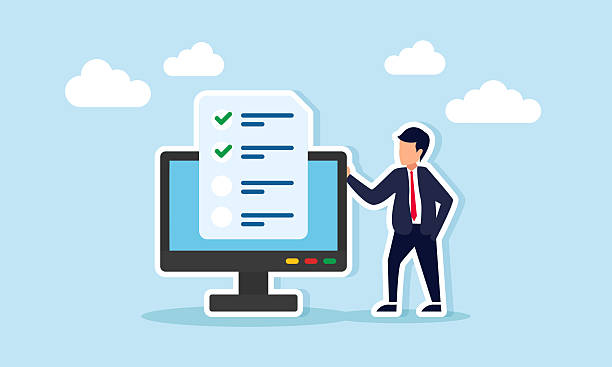
Having just a multilingual website design is not enough; for this site to be visible in search results, you need a strong international SEO strategy.
As mentioned in the technical section, correctly implementing Hreflang tags is of high importance.
These tags tell search engines like Google which version of the page is appropriate for which language and geographical region.
Incorrect use of them can lead to problems such as duplicate content.
Creating a separate XML sitemap for each language is also an effective way to help search engines discover and index all your multilingual pages.
Furthermore, keyword research for each language and target region separately is crucial.
Keywords effective in one language may not be effective in another or may have a different translation that people do not search for.
High-quality, localized content that naturally uses appropriate keywords increases your chances of ranking.
Also, internal and external link building, considering different languages, boosts your page authority.
Site loading speed and responsive design for all languages and devices are also important SEO factors.
Search engines highly consider user experience.
Continuous monitoring of the site’s SEO performance using tools like Google Search Console and Google Analytics for each language allows you to improve your strategy and identify potential issues.
A comprehensive and smart approach to multilingual SEO guarantees the visibility and success of your multilingual website design in global competition.
Did you know that poor online store design can drive away up to 70% of your potential customers? Rasawweb transforms your sales with professional and user-friendly e-commerce website designs.
✅ Significant increase in sales and revenue
✅ Full optimization for search engines and mobile
⚡ [Get a free consultation from Rasawweb]
Challenges of Content Translation and Localization

Simple word-for-word translation from one language to another is not enough for successful multilingual website design.
Localization goes beyond literal translation and involves adapting content to the culture, values, habits, and even humor of the target audience.
Did you know that a phrase perfectly normal in one culture might be considered offensive in another? This is where the challenges of localization become apparent.
Ensuring translation quality is one of the biggest concerns.
Using native translators and specialists in the relevant field is crucial not only for linguistic accuracy but also for understanding cultural nuances and specific idioms of that language.
Machine translation, although fast and cheap, usually cannot grasp these subtleties and can harm your brand’s credibility.
Besides language, attention must be paid to currency, date and time formats, phone numbers, and addresses.
Even colors and images can have different meanings in various cultures.
For example, red may symbolize love and joy in some cultures, while in others, it might symbolize danger.
Managing the translation process and ensuring continuous updates of translated content simultaneously with the original content is another major challenge.
Using Translation Management Systems (TMS) can help in this process.
A thought-provoking question in this area is how can we ensure that our localization is complete without losing the brand’s core identity? The answer lies in close collaboration with localization specialists and continuous testing of user experience in different languages.
Multilingual website design requires special attention to these cultural details.
Improving User Experience on Multilingual Sites
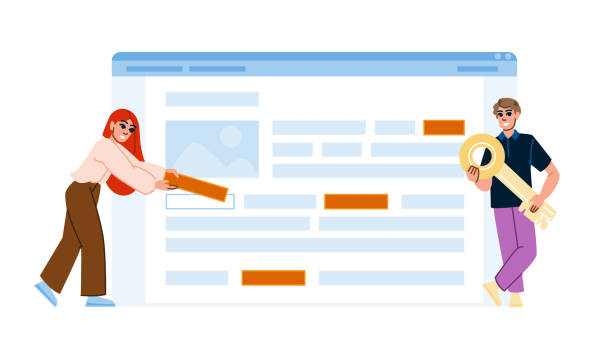
User experience (UX) is of particular importance in multilingual website design.
A poor UX can nullify even the best translated content.
One of the key aspects is the ability to change language easily and clearly.
The language switcher button should be placed in an accessible and prominent location, usually in the site’s header or footer.
Using flags alongside language names can aid faster identification, but care must be taken that flags do not solely symbolize a country but rather a global language (e.g., the US or UK flag for English).
Maintaining design consistency across all language versions is also essential.
Layout, colors, fonts, and the overall style of the site should remain consistent across all languages so that users feel familiar and comfortable, regardless of the language they have chosen.
Furthermore, page loading speed in each language should be optimized; delays in loading can discourage users.
Site responsiveness across all devices (mobile, tablet, desktop) is also crucial for optimal UX on multilingual sites.
Some languages, like German, have longer texts that might disrupt fixed layouts, so the design must be flexible.
Providing clear guidance and calls-to-action (CTAs) that are correctly translated and localized guides users toward desired actions.
A successful multilingual web design, in addition to excellent content, must offer an unparalleled user experience in every language.
This is an educational and guiding content piece that helps businesses attract global user satisfaction and improve conversion rates by focusing on UX.
This is especially vital for international marketing.
Useful Tools and Platforms for Multilingual Sites

To effectively implement multilingual website design, a range of tools and platforms are available, each offering specific capabilities.
The correct choice of these tools depends on your needs, budget, and current website platform.
Content Management Systems (CMS) such as WordPress, Joomla, and Drupal form the foundation for many multilingual websites.
WordPress, with plugins like WPML and Polylang, easily enables language management.
Drupal boasts stronger native multilingual capabilities and is more suitable for larger projects, while Joomla also provides multilingual support through internal components and plugins.
In addition to CMSs, specialized translation platforms like Phrase (formerly PhraseApp), Lokalise, and Smartling help companies manage the translation process and ensure content quality and consistency across all languages.
These platforms typically feature glossary management, translation memory, and connections to professional translators.
For SEO, tools like Ahrefs and SEMrush can be useful for multilingual keyword research and monitoring international competitors.
Google Analytics and Google Search Console are also essential for monitoring site performance in different languages.
Furthermore, for A/B testing and Conversion Rate Optimization (CRO) on multilingual sites, tools like Optimizely or VWO can be beneficial.
Finally, CDN (Content Delivery Network) services like Cloudflare or Akamai can increase site loading speed for global users, significantly improving user experience and SEO.
Smart selection and use of these tools make the multilingual website design and management process much more efficient.
This is expert guidance for those looking to optimize their operations on a global scale.
| Tool Category | Example Tool/Platform | Application in Multilingual Site |
|---|---|---|
| Content Management System (CMS) | WordPress (with WPML/Polylang), Drupal, Joomla | Easy content management in different languages, creating multilingual structure |
| Translation Management Platforms (TMS) | Phrase, Lokalise, Smartling | Automating and managing translation process, ensuring translation quality and consistency |
| SEO Tools | Ahrefs, SEMrush, Google Search Console | International keyword research, monitoring SEO performance in different languages |
| Content Delivery Network (CDN) | Cloudflare, Akamai | Increasing site loading speed for users worldwide |
Measuring Success and Analyzing Multilingual Site Performance
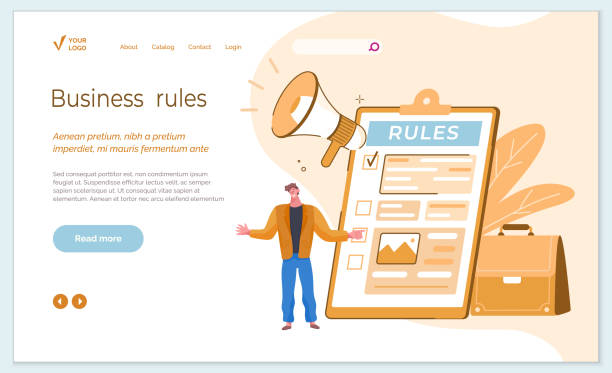
After implementing multilingual website design, the next crucial step is measuring its success and analyzing its performance.
Has your site achieved its international goals? To answer this question, you need to monitor key performance indicators (KPIs) for each language and region separately.
Tools like Google Analytics allow you to filter data based on language and geographical location.
Metrics such as organic traffic from different regions, Conversion Rate for each language, Session Duration, and Bounce Rate can provide valuable insights.
For example, if the bounce rate for the French version of your site is high, it might indicate localization or user experience issues for French-speaking users.
Did you know that cultural differences can significantly impact user behavior on a website? This is an analytical content piece that helps you not only understand how your site performs but also why.
Furthermore, you must carefully examine SEO performance for each language.
Keyword rankings, the number of indexed pages, and backlinks for each language should be continuously tracked.
Direct feedback from multilingual users is also very important.
Surveys, contact forms, and even social media comments can provide valuable information about your site’s problems or strengths in different languages.
A comprehensive analysis of the data allows you to make data-driven decisions for further site optimization and to achieve maximum return on your investment in multilingual website design.
Did you know that customers’ first impression of your company is your website? Multiply your business’s credibility with a powerful corporate website from Rasawweb!
✅ Custom and eye-catching design tailored to your brand
✅ Improved user experience and increased customer acquisition
⚡ Get a free consultation!
Common Mistakes in Multilingual Projects and Ways to Avoid Them

Despite the many benefits of multilingual website design, multilingual projects can come with common challenges and mistakes that, if unaddressed, can lead to project failure.
One of the biggest mistakes is mere translation and lack of content localization.
As mentioned earlier, language and culture are closely linked; a dry, machine-like translation without regard for cultural nuances can make your message unclear or even offensive.
To avoid this error, always use native translators and localization specialists.
Another mistake is neglecting international SEO.
Without proper implementation of Hreflang tags, appropriate keyword research for each language, and an optimized URL structure, your site will not appear in search results for international audiences.
Did you know that Google has slightly different search algorithms for each language and country? Failure to plan for continuous management of multilingual content is also a common mistake.
Website content changes over time, and translated versions must be updated simultaneously to provide accurate and up-to-date information to users.
Ignoring the specific user experience (UX) of each language, especially for right-to-left (RTL) languages like Persian and Arabic, can lead to inappropriate design and user confusion.
Furthermore, choosing an unsuitable platform or not using enough tools for multilingual project management can increase complexities.
To avoid these mistakes, thorough planning, hiring a specialized team, and using appropriate tools for each stage of multilingual website design and management are essential.
This is a thought-provoking content piece that helps businesses achieve a more successful path in this field by learning from common mistakes.
The Future of Multilingual Web Design and Emerging Trends
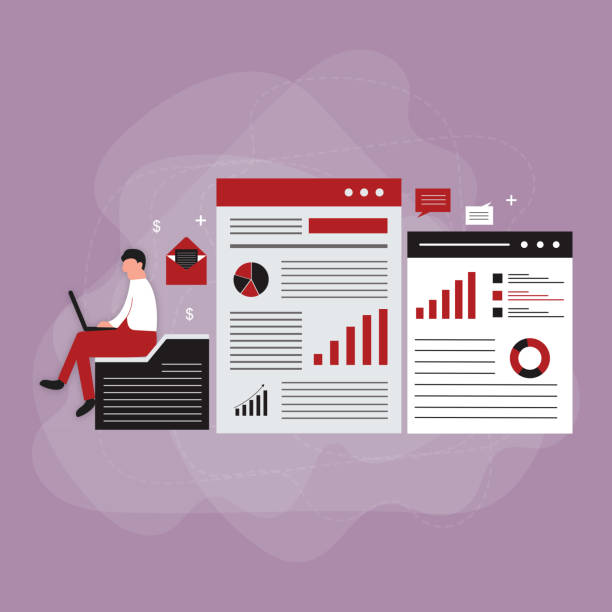
The world of multilingual website design is constantly evolving and progressing, with new trends emerging that shape the future of this field.
One of these trends is the significant advancements in Artificial Intelligence (AI) and Machine Learning in the realm of translation and localization.
Neural Machine Translation (NMT) has become increasingly accurate and natural, allowing initial content to be generated faster and then refined by human translators.
This can significantly reduce the cost and time required for multilingual website design.
We are also seeing an increased use of multilingual chatbots and voice assistants that provide a more personalized user experience.
These technologies help businesses communicate with their customers in their native language in real-time and offer instant support.
Another important trend is the growing importance of multilingual video and audio content.
Translating and localizing subtitles, dubbing, and transcripts have become crucial for attracting global audiences across various platforms.
Blockchain and Web 3.0 may also play a significant role in how content ownership and translation are managed in the future, though they are still in their early stages.
Finally, content personalization based on user data and AI, meaning automatically delivering relevant and localized content to each user, is an exciting trend that can elevate the user experience to a higher level.
This is an informative and entertaining content piece that gives you a glimpse into a bright future for multilingual website design.
Frequently Asked Questions
| Question | Answer |
|---|---|
| What is multilingual website design? | It is the design of a website whose content is available to users in several different languages, so that users can select their desired language. |
| Why is a multilingual site important? | To access international audiences, increase website traffic, improve user experience for non-Persian-speaking visitors, and expand business in global markets. |
| What are the benefits of having a multilingual site? | Increased international SEO, attracting new customers from different countries, enhancing business credibility and professionalism, and reducing bounce rate by providing understandable content. |
| What are the methods for implementing a multilingual site? | Using subdirectories (e.g., example.com/en/), subdomains (e.g., en.example.com), or separate country code top-level domains (e.g., example.com and example.de) for each language. |
| Which URL structure is best for international SEO? | Subdirectories (e.g., example.com/en/) are often preferred for SEO due to the consolidation of main domain authority, although each method has its advantages and disadvantages. |
| How does a multilingual site affect SEO? | By providing content in different languages, the site appears in local search results for those languages, click-through rates and traffic increase, and the overall domain authority of the site improves. Correct use of hreflang tags is very important. |
| How is content translation managed? | Professional translators, machine translation tools (with human editing), or Content Management Systems (CMS) with built-in multilingual capabilities or relevant plugins can be used. |
| What are the common challenges in multilingual website design? | Managing translated content, maintaining design consistency across different languages, compatibility with Right-to-Left (RTL) languages like Persian and Arabic, optimizing SEO for each language, and choosing the appropriate URL structure. |
| How do I manage text direction (LTR/RTL) on a multilingual site? | For Right-to-Left languages (like Persian), you need to apply specific CSS styles to change text direction, element arrangement, and table orientation. Often, this is done using the direction: rtl; property and other related settings. |
| How can users change the site language? | Usually by using a button, dropdown menu, or language selection widget clearly placed in the site’s header or footer. Automatic detection of the user’s browser language and suggesting a language change is also common. |
And other services of Rasaweb Advertising Agency in the field of advertising
Smart Digital Branding: A fast and efficient solution for increasing sales by focusing on optimizing key pages.
Smart Digital Branding: A new service to increase user engagement through the use of real data.
Smart Link Building: Professional optimization to increase website traffic using precise audience targeting.
Smart Data Analysis: Designed for businesses looking to analyze customer behavior through Google Ads management.
Smart Marketplace: A dedicated service for online growth based on SEO-driven content strategy.
And over hundreds of other services in the field of online advertising, advertising consultation, and organizational solutions
Online Advertising | Advertising Strategy | Advertorials
Resources
Article on Multilingual Website DesignBenefits of Creating a Multilingual SiteImportant Features of a Bilingual SiteComprehensive Guide to Building an International Site
? Are you ready to boost your business in the digital world? Rasaweb Afarin Digital Marketing Agency, specializing in SEO, content marketing, and responsive website design, is here to help you reach the top.
📍 Tehran, Mirdamad Street, next to Bank Markazi, Southern Kazeroon Alley, Ramin Alley, No. 6

